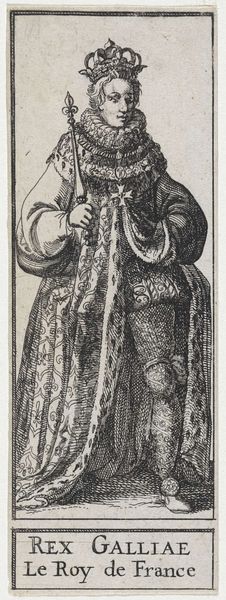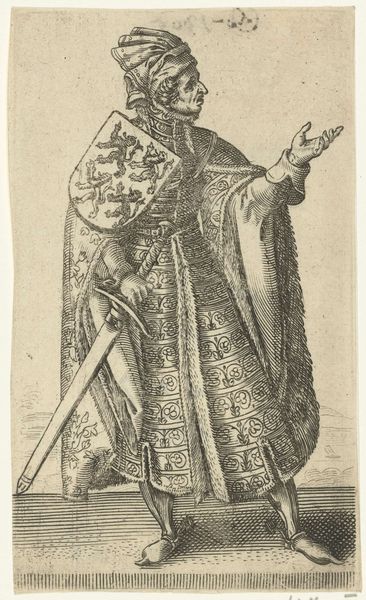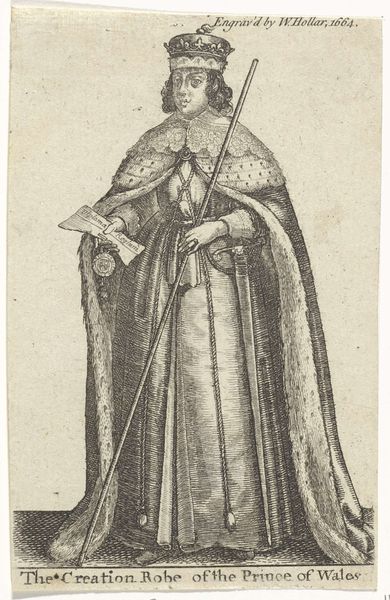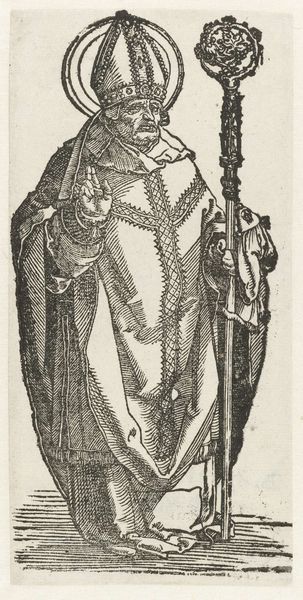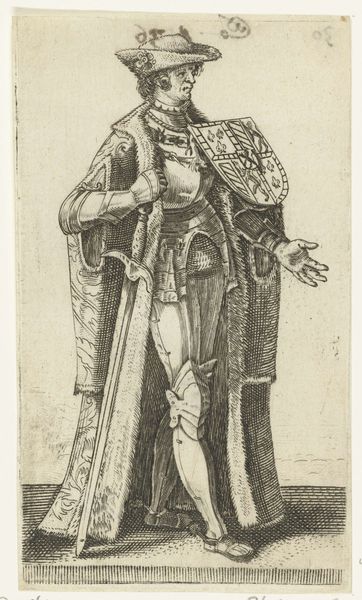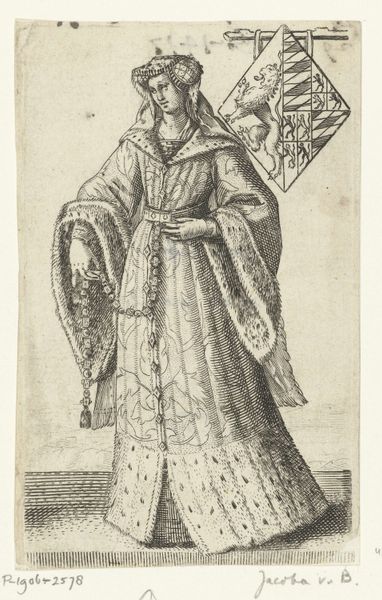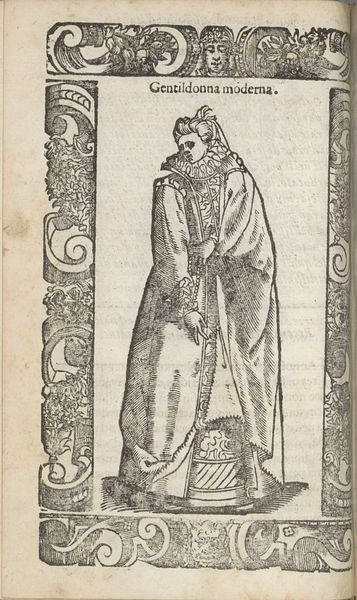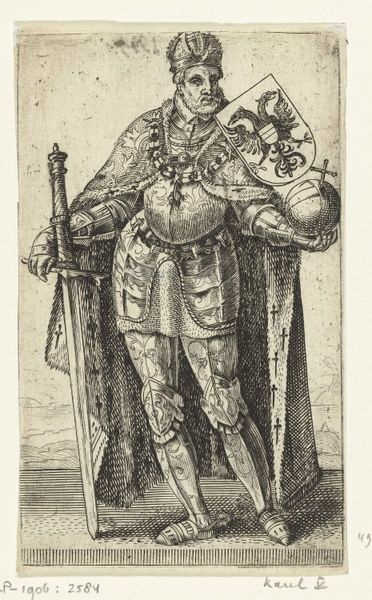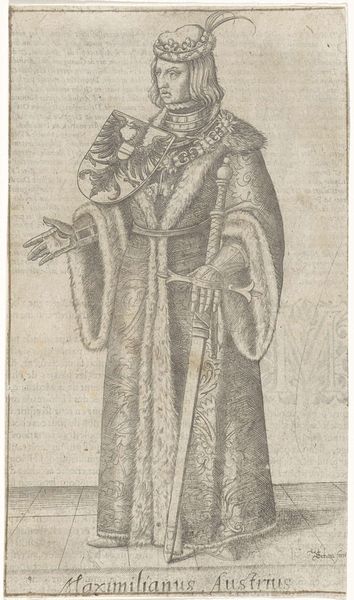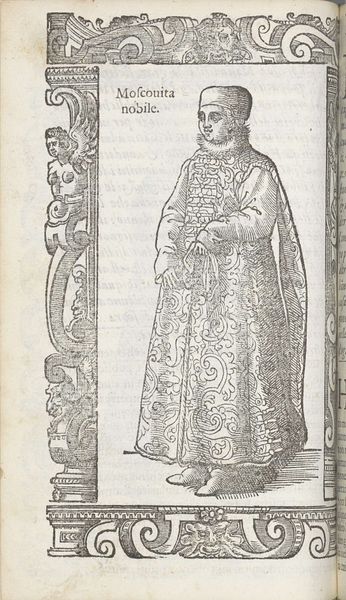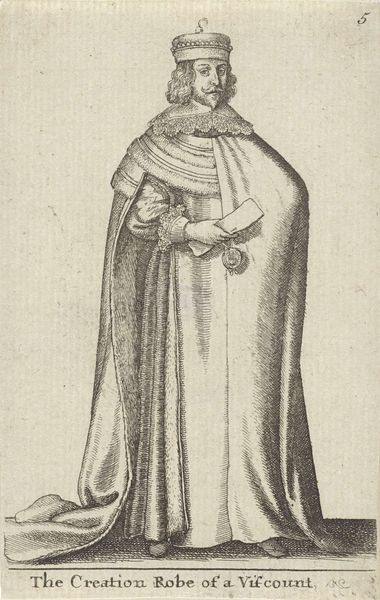
print, engraving
#
portrait
#
baroque
# print
#
old engraving style
#
history-painting
#
engraving
#
realism
Dimensions: height 130 mm, width 47 mm
Copyright: Rijks Museum: Open Domain
Editor: So, here we have a print titled "Portret van een koningin van Frankrijk," made in 1618 by Claes Jansz. Visscher. It's currently housed in the Rijksmuseum. It feels incredibly formal, even a bit severe. I'm curious, what do you see in this piece beyond just a royal portrait? Curator: I see layers of cultural memory embedded in the very lines of this engraving. Consider the fleur-de-lis motif emblazoned on her robe—a symbol not just of French royalty, but of centuries of inherited power and divine right. How might the repetition of this emblem serve as a visual affirmation of her authority? Editor: It's almost like branding, repeating the symbol everywhere to reinforce the message. But why choose engraving, such a meticulous and detailed medium, for this message? Curator: The act of engraving itself carries weight. It's deliberate, permanent. Each line etched into the plate, reproduced in multiples, transmits a carefully constructed image to a wider audience. It speaks to the enduring nature of power and legacy. The ruff, for instance, is a visual barrier, setting her apart. Does that physical separation enhance or detract from her authority in your view? Editor: I guess it reinforces the distance between the queen and her subjects. I hadn't really considered the symbolic meaning behind the technique itself before. Curator: Exactly. Even the limited tonal range of a print enhances this; like memory, not every detail survives with clarity, but the overall impact remains. Each element resonates, creating a powerful representation of monarchy intended for cultural dissemination. Editor: That's fascinating, seeing how the medium itself is part of the message. Thanks, that gives me a whole new perspective on interpreting portraits like this. Curator: My pleasure. Consider how later works use or subvert similar techniques. It's a dialogue through time.
Comments
No comments
Be the first to comment and join the conversation on the ultimate creative platform.
